Toyota GR Yaris gets even more muscle
Already in its first attempt, the Toyota GR Yaris did not quite suffer from a power deficit. But the sport department of Toyota was not satisfied with that. Thanks to an extensive power training, the little three-door car now performs even more impressively - and that too with an automatic transmission.
In its first four years of life, the Toyota GR Yaris has earned its exceptional position in the field of "Hot Hatch" cars. Other cars in this segment like the Polo GTI with 207 PS or the Hyundai i20N with 204 PS cannot come close to the little Japanese car with its powerful 1.6-liter three-cylinder engine.
In the newly priced version, which is now available for just under 50,000 Euro and has undergone significant technical modifications, the three-door car now delivers 20 more horsepower, bringing the total to 280 PS, and 30 more Newton-meters, bringing the total to 390 Newton-meters. This means that the powertrain has even less effort to move the 1,280 to 1,305 kg (depending on the specifications) lightweight car. In addition, the Gazoo Racing team has thoroughly revised the four-meter chassis in all relevant areas.
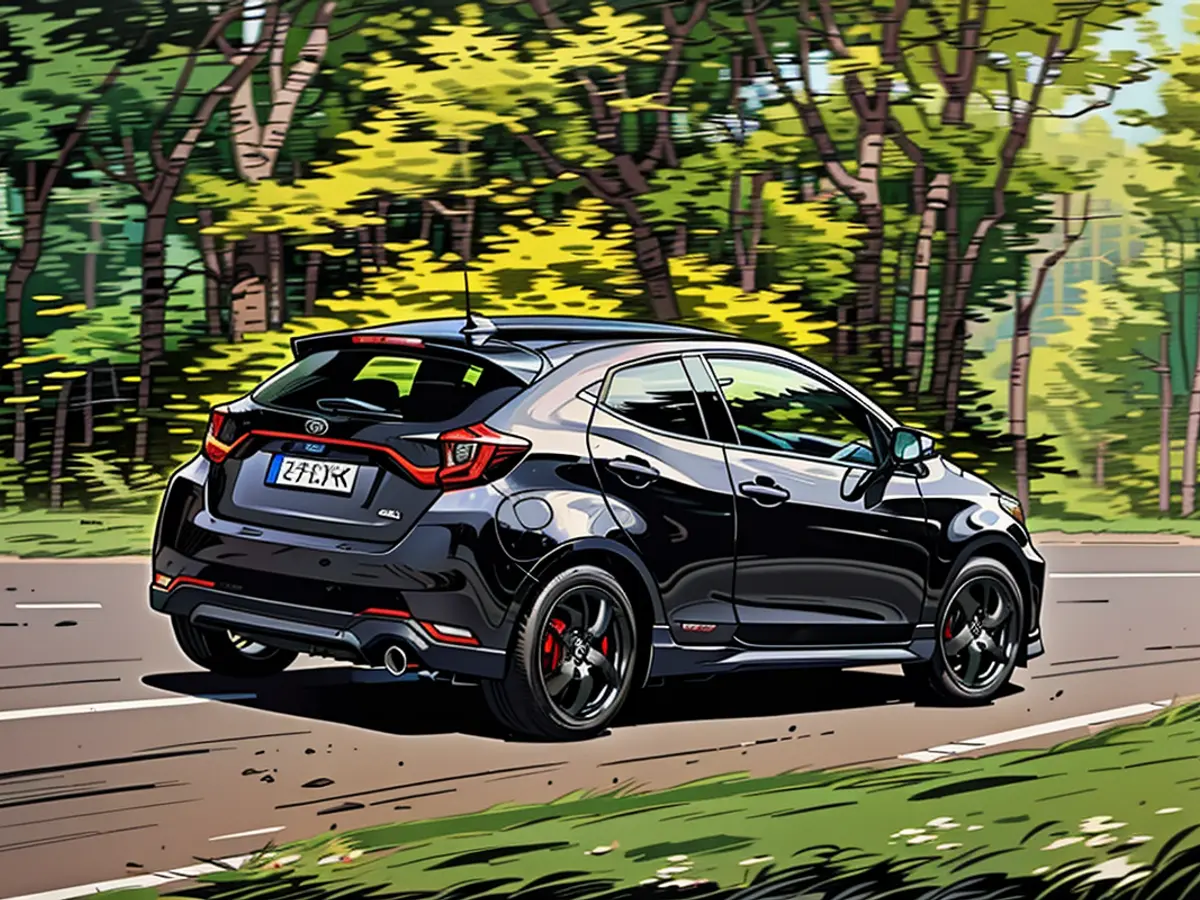
The suspension has received an update, including new damper rates and stronger shock absorbers up front. The standard performance package includes an additional cooler, a cooling spray for the intercooler, and a modified air intake, which ensures thermal stability. The engine has also been improved with a reinforced valvetrain, a new intake pressure sensor, and new exhaust valves to improve durability and longevity.
Moreover, in addition to the already known six-speed manual transmission, the GR Yaris now also comes with an eight-speed automatic. It is designed for quick downshifts and relieves the driver behind the steering wheel, especially on the race track or rally tour.
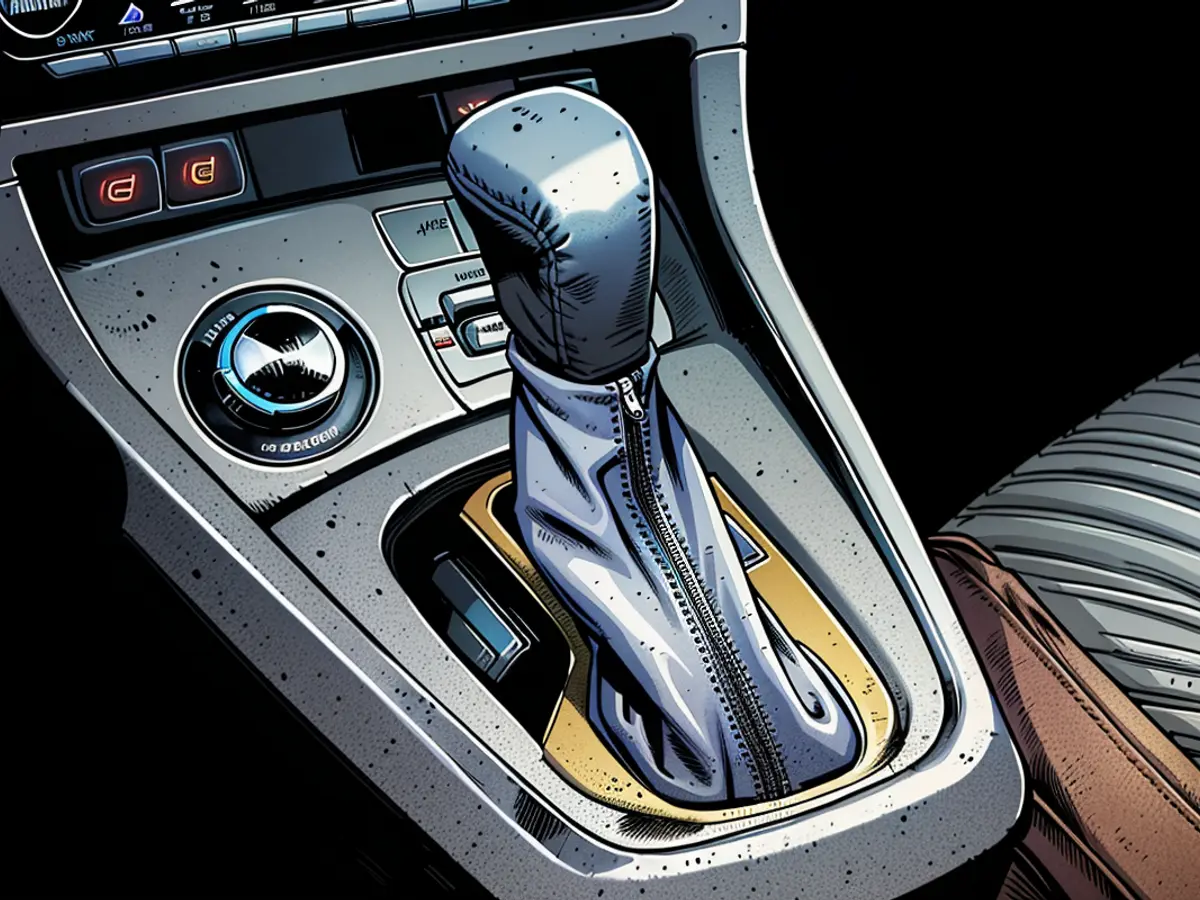
Fixed Automat takes over shifting
First impression of the very technically designed Circuit du Laquais in Lyon: Those who can have the shifting work taken care of are actually noticeably more stable in the curve loop, allowing full concentration on steering, braking, and throttle control, which positively affects lap times. The automatic selects the appropriate gear extremely quickly and practically without interruption in power. Alternatively, the GR Yaris offers the modes Normal and Eco, which influence the power steering, climate control, fuel consumption, and instrument display.
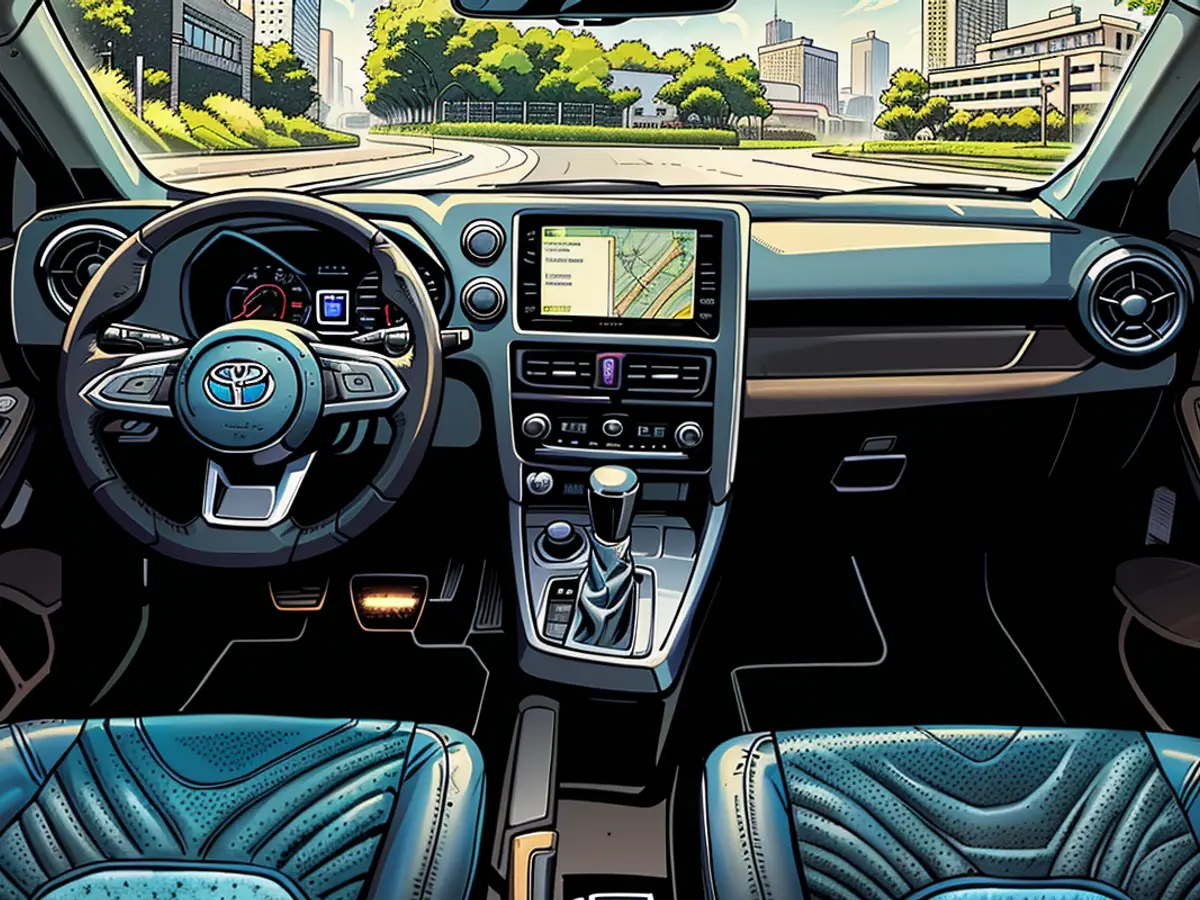
Via a button press, the GR Four all-wheel-drive system can also be influenced. In the Normal mode, the powertrain delivers its power to the front axle to 60% and to the rear axle to 40%. In Track mode, the power distribution between the front and rear axles varies between 60:40 at the curve entry and 30:70 when leaving the curve. And in Gravel mode, the power distribution ratio of 53:47 has proven ideal for circular courses or special tests. In addition, the two locking differentials regulate the balance between the left and right 18-inch wheels.
Under the hood, the GR Yaris delivers impressive performance beyond public roads, which can also be experienced acoustically inside through the onboard sound system. But not excessively.
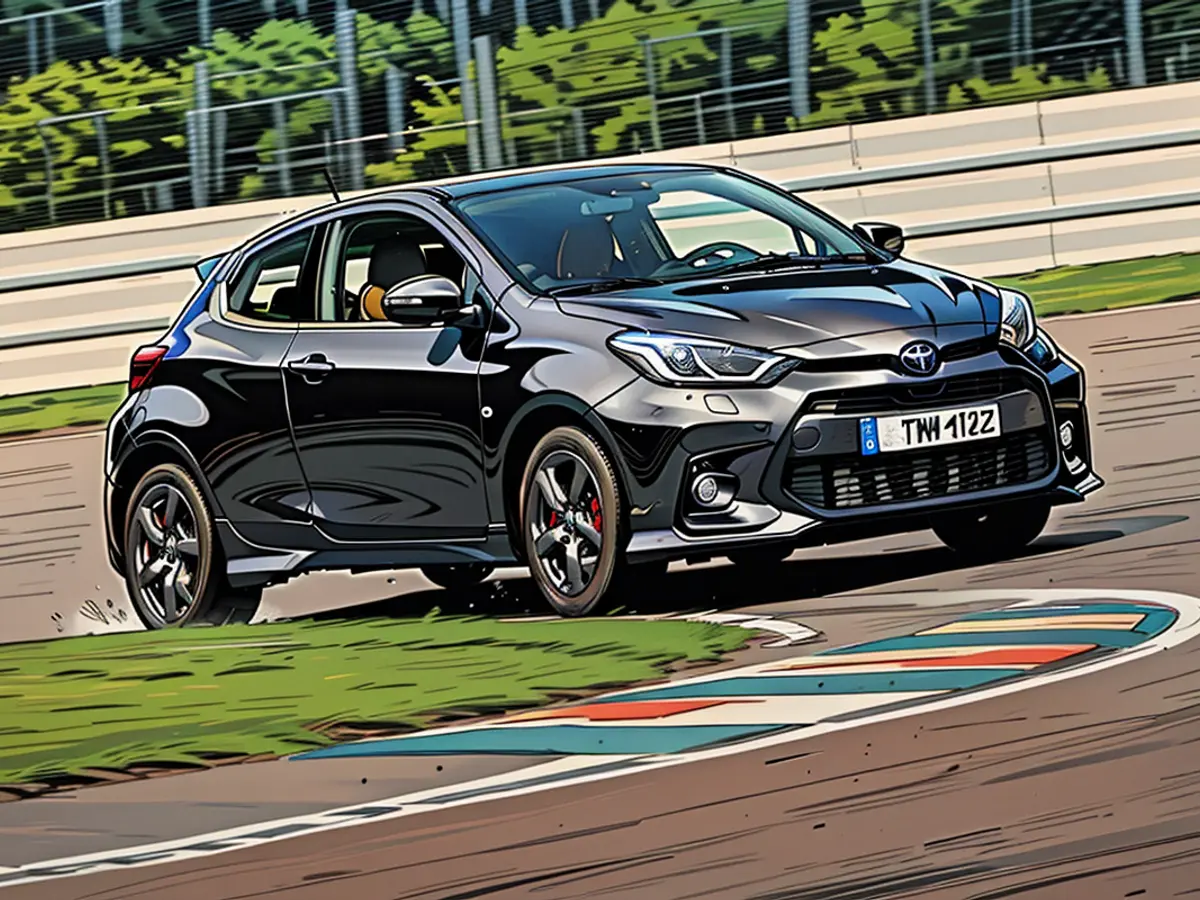
Toyota GR Yaris wants to be driven smoothly
But what does it look like on normal roads? Specifically in strictly speed-limited and extensively monitored France, one feels a bit out of place with the GR Yaris. The car wants to be driven smoothly, after all, it goes from 0 to 100 km/h in just 5.2 seconds.
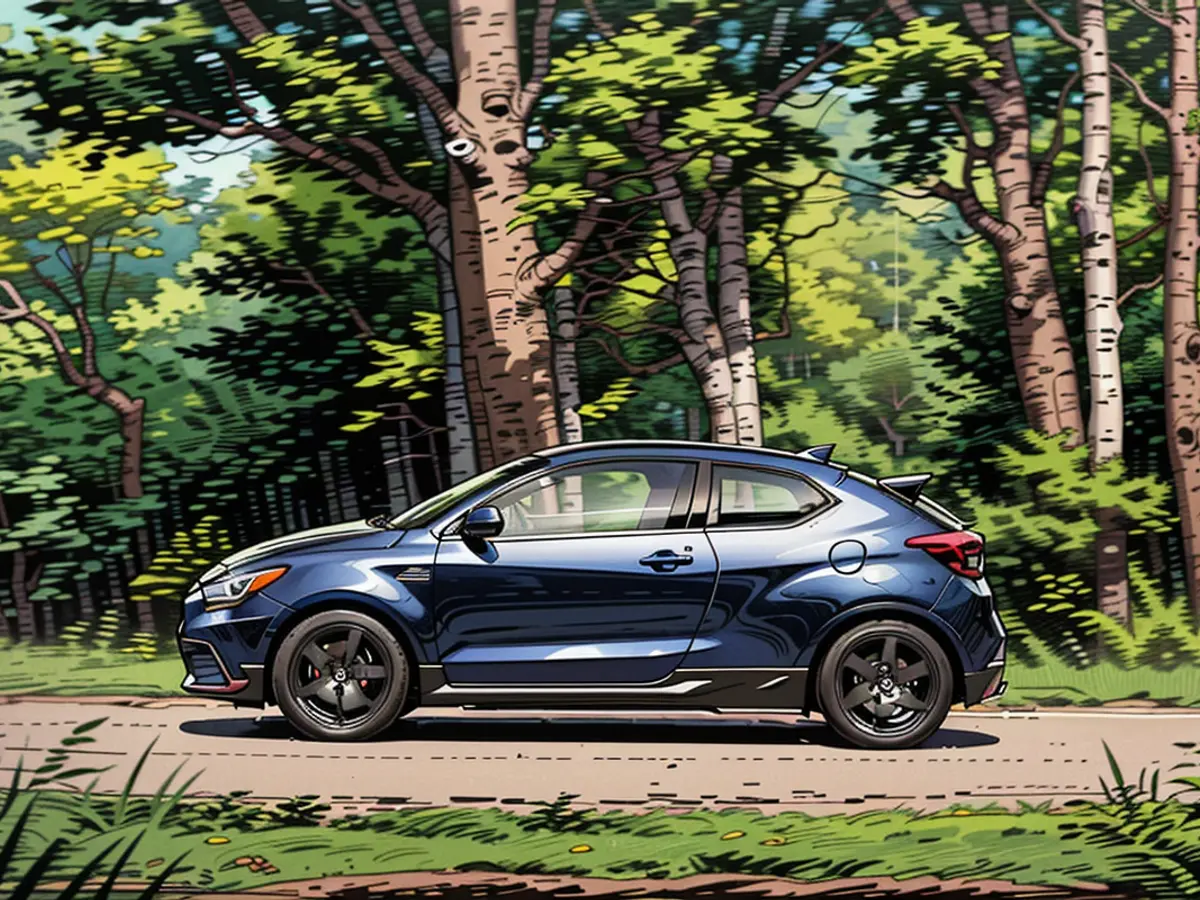
Attention is permanently focused to some extent and more or less successfully, avoiding exceeding one of the constantly changing limits. A speed of up to 230 km/h straight on German autobahns may not be everyone's idea of the ultimate feeling.
The three-cylinder racer is not brutally hard but rather finely tuned, which can be tiring on long stretches. Curvy country roads with a maximum of two passengers suit the character of the four-seater best, whose front seats are somewhat difficult to climb into and due to the strongly sloping roof are not particularly airy. The little one behaves like a big one, and the chassis handles even the most delicate curves effortlessly.
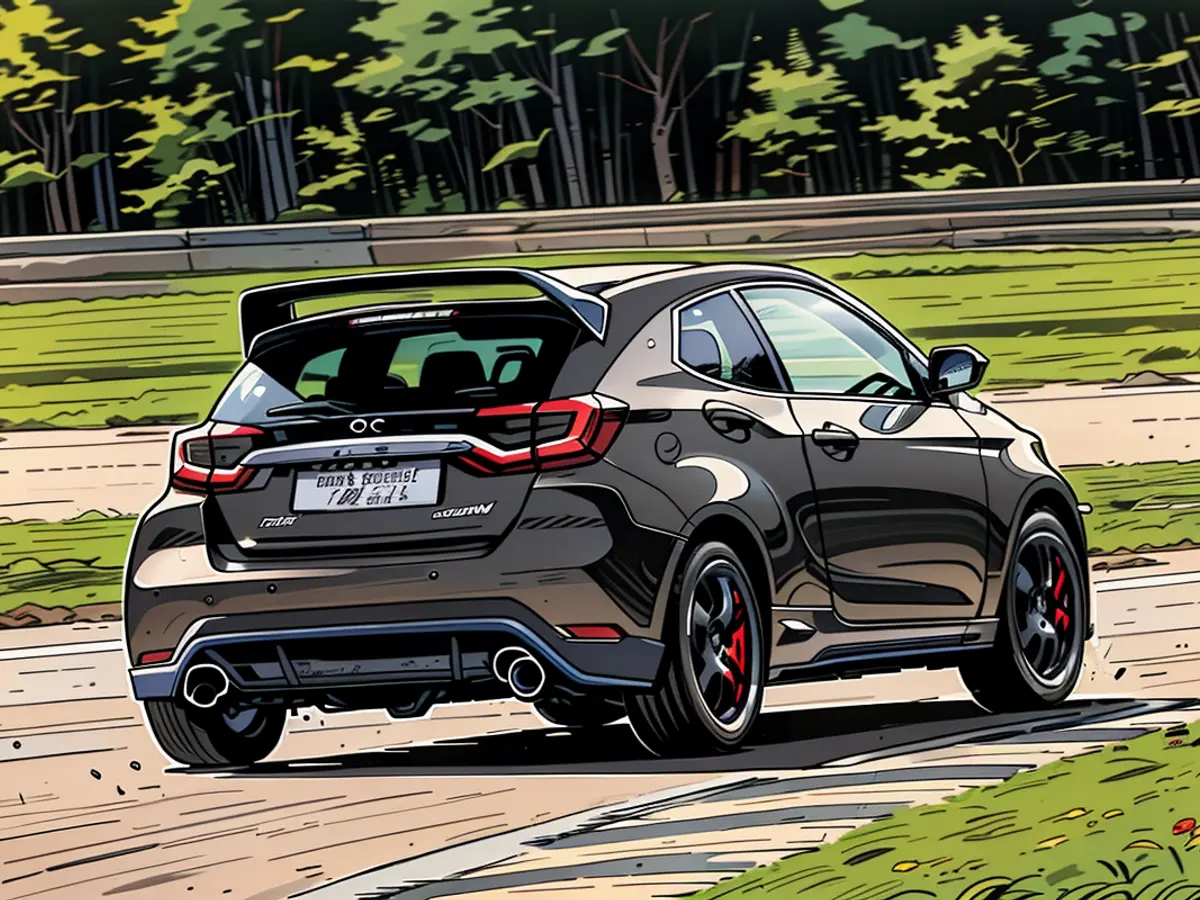
Changes based on criticism
In response to criticism of the slightly too high mounting position of the steering wheel seat for the driver in Generation one, Gazoo Racing made a 2.5 centimeter lowering, in addition, the operating field of the 12.3-inch combined instrument was slightly tilted to the left and the upper edge of the instrument panel was raised by 5 centimeters. The verdict after the first test laps: Thank you, it fits! The new placement of the controls is also sensible. So, the air conditioning nozzle spray and the switches for the stability system and the warning light are easier to reach with the racing harness on - a clear indication of the direction of the improvement.

In its dimensions, the GR Yaris remains unchanged. Various thermal, aerodynamic, and service-related modifications, such as the lower grille, the lower bumper, the spoiler, and the rear bumper, will only be noticeable to insiders. However, the new exterior paint job, named Precious Metal, is easily recognizable. In addition, there are the colors Emotional Red, Precious Black, and Super White/Platinum White Pearlescent. And in the Ogier Edition, named after the rally driver Sébastien Ogier, there is also mattes Stealth Grey. The three-color painted Rovanpera Edition, dedicated to Ogier's colleague Kalle Rovanpera, has approximately the Donut mode installed, which makes it particularly fun to spin around.
Mini-Bolide swallows quite a bit
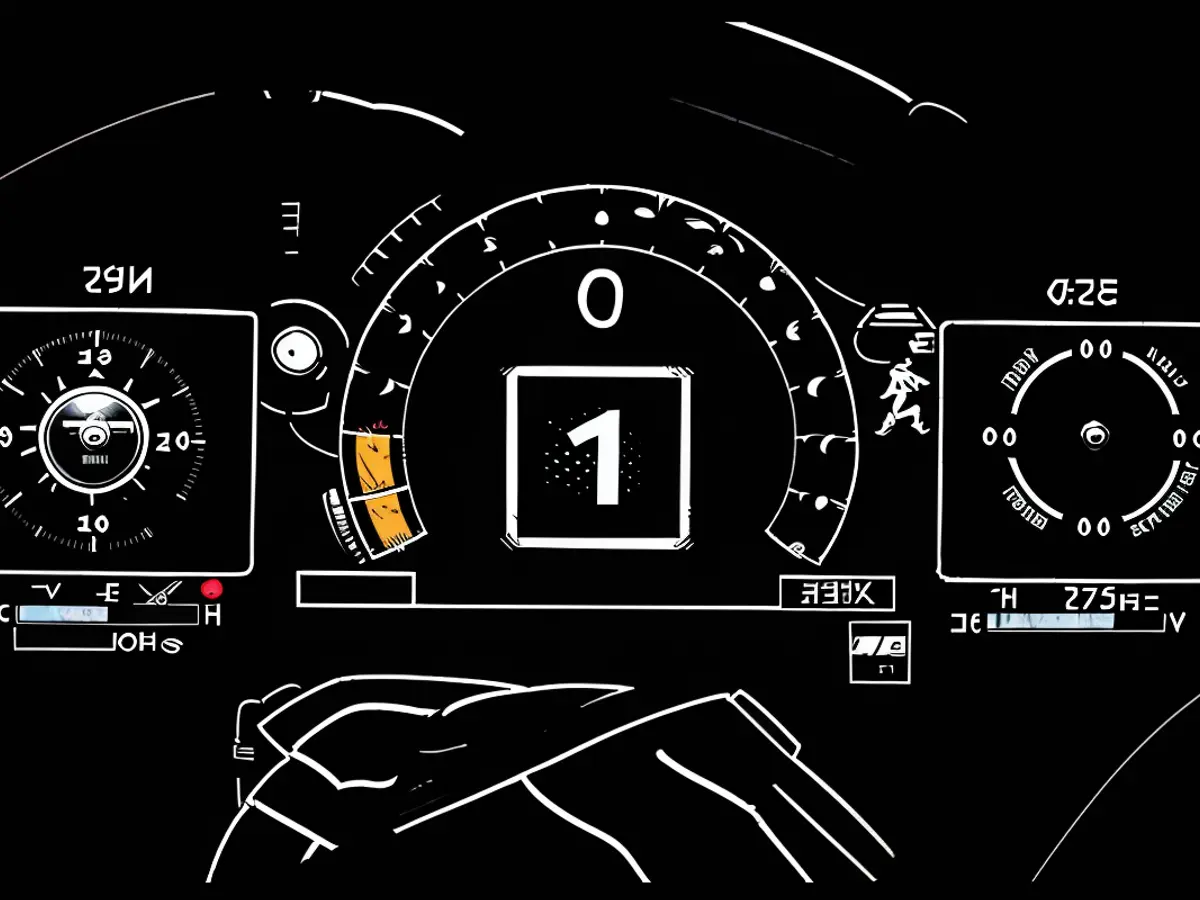
This redesigned GR Yaris is a powerful piece of technology in a small package. Despite all the fascination with the performance and the formidable handling and despite the persistent grin during forced cornering, there is always the question with a Mini-Bolide of this type: After all, it consumes an excessive amount of fuel according to the WLTP norm, 8.7 to 9.5 liters per 100 kilometers. With proper driving, it is significantly lower. That's not very timely. Above all, when looking at the civil brother Yaris Hybrid, with which one can easily get by with a consumption of four liters on the road.
However, a widespread distribution of the street sweeper is not to be expected. Toyota O-ton: "The GR Yaris will be available in limited quantities." And that from 47,490 Euro for the manual version and from 49,990 Euro for the automatic version. The two special editions are each priced at 69,900 Euro in the price list.
Toyota GR Yaris - technical data
- Four-door, four-seater compact car
- Length: 4.00 Meter, Width: 1.81 Meter (with exterior mirrors: unknown), Height: 1.46 Meter, Wheelbase: 2.56 Meter, Trunk volume: 174 Liter
- 1.6-Liter-three-cylinder-turbo gasoline engine, 206 kW/280 PS, maximum torque: 390 Nm at 3250-4600 rpm/min, Eight-speed-automatic or Six-speed-manual transmission, All-wheel drive
- 0-100 km/h: 5.2 s, Top speed: 230 km/h, WLTP-consumption: 9.5 (Automatic) and 8.7 Liter/100 Kilometer (Manual), CO2-emissions: 215 and 198 g/km (WLTP), Emission standard: Euro 6d, Efficiency class: G
- Price: starting at 47,490 Euro (Manual) and 49,990 Euro (Automatic)
With the powertrain enhancements, the Small car, the Toyota GR Yaris, now offers an impressive 280 PS and 390 Newton-meters, allowing for effortless movement of its 1,280 to 1,305 kg weight. The Gazoo Racing team has also improved the engine with reinforced valvetrain and new exhaust valves, increasing durability and longevity.
The Toyota GR Yaris, available in a newly priced version, now comes with an eight-speed automatic transmission, perfect for quick downshifts and providing relief to the driver during high-speed racing or rally tours.
[Optional ended sentences:]The GR Yaris, now with an automatic transmission, offers a stable performance in corners, allowing drivers to focus on steering, braking, and throttle control.
In the newly priced version, Toyota GR Yaris models feature an eight-speed automatic transmission designed for quick downshifts, providing drivers with a stress-free experience on the track or rally tour.








